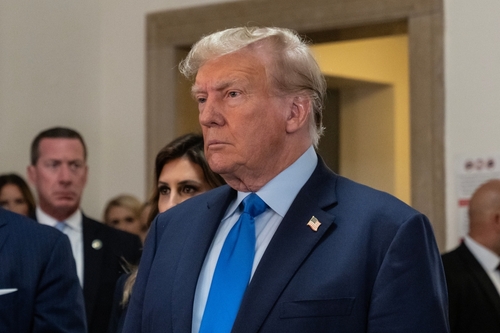Russia’s spy chief has issued a chilling warning to Poland and the Baltic states, claiming they would be “the first to suffer” in any direct conflict between NATO and Russia as tensions reach dangerous new heights.
At a Glance
- Russia’s Foreign Intelligence Service Director Sergey Naryshkin warned Poland and Baltic states would be “first to suffer” in any NATO-Russia conflict
- Poland, Estonia, Latvia, and Lithuania have withdrawn from the Ottawa Convention banning anti-personnel mines, citing increased Russian threats
- European nations are rapidly re-arming, with some experts warning of potential large-scale war by 2029
- Baltic states are building a joint defense line on their border with Russia as tensions escalate
- Ukrainian President Zelensky has warned that if Russia isn’t stopped in Ukraine, NATO territory could be next
Russia Singles Out NATO’s Eastern Flank
In a statement widely reported by Russian state media, Foreign Intelligence Service Director Sergey Naryshkin specifically targeted Poland and the Baltic nations with military threats, ratcheting up already dangerous tensions between Russia and NATO. Naryshkin’s comments came after a meeting with Belarusian leader Alexander Lukashenko, a close ally of Russian President Vladimir Putin. The intelligence chief accused these nations of showing “high aggressiveness” toward Russia and Belarus, while claiming they would face severe consequences for any NATO action.
The Russian intelligence director specifically criticized Poland for its military plans, including preparations to install anti-personnel mines along its borders and reported requests for American nuclear weapons. These accusations follow Poland’s decision, along with Estonia, Latvia, and Lithuania, to withdraw from the Ottawa Convention banning anti-personnel mines. The countries cited the growing military threat from Russia as justification for this significant policy shift in their defense posture.
NATO’s Eastern Members Bolster Defenses
Nations along NATO’s eastern flank have been on high alert since Russia’s full-scale invasion of Ukraine began in February 2022. Latvia, Lithuania, and Estonia are actively constructing a joint defense line along their borders with Russia and Belarus, while Poland has emerged as one of Europe’s most heavily armed nations after significantly increasing its military spending. The Baltic states have expressed particular concern given their geographic vulnerability and historical experiences with Russian occupation.
“They should understand, but do not yet understand, that in the event of aggression by the North Atlantic Alliance against (Russia and Belarus), damage will be done, of course, to the entire NATO bloc, but to a greater extent, the first to suffer will be the bearers of such ideas among the political circles of Poland and the Baltic countries” – Sergey Naryshkin.
The defensive preparations extend beyond the immediate border nations. Germany has deployed troops to Lithuania as part of NATO’s enhanced Forward Presence, while several European countries have reinstated or strengthened military conscription. Norway is preparing for mass evacuation drills and will host a major NATO exercise next year, demonstrating the alliance-wide response to perceived Russian threats.
Kremlin’s Narrative on Ukraine War
Naryshkin’s comments included blaming NATO for Russia’s war against Ukraine, a narrative consistently pushed by the Kremlin to justify its invasion. The intelligence chief claimed that increased military activity near Russia’s borders was a key factor in the current “dangerous crisis on the European continent.” This rhetoric aligns with Moscow’s frequent portrayal of its invasion as a defensive reaction to NATO expansion, despite Ukraine not being a NATO member.
“(Poland and the Baltic countries) just can’t understand that it was the build-up of military activity on the borders of Russia and Belarus that became one of the factors, one of the reasons for the current large, acute, and very dangerous crisis on the European continent” – Sergey Naryshkin.
Ukrainian President Volodymyr Zelensky has repeatedly warned that if Russia is not stopped in Ukraine, it may target NATO territory next, potentially triggering Article 5 of the NATO treaty and a wider European conflict. This assessment is increasingly shared by Western intelligence agencies, with some warning that Europe should prepare for the possibility of a large-scale war within the next five years due to Russia’s continued aggression.
Growing Concerns About Wider European Conflict
European Union officials are reportedly preparing contingency plans for a potential large-scale conflict with Russia, with some military analysts suggesting 2029 as a possible timeframe when Russia might have sufficiently rebuilt its military capabilities. The EU’s eastern members have been pushing for greater defense investment and preparedness, with Poland emerging as a critical logistics hub for Western military aid to Ukraine.
These preparations come amid uncertainty about future U.S. commitment to NATO, with some voices in American politics questioning the alliance’s value. Former U.S. President Donald Trump has previously suggested the possibility of withdrawing from NATO, and reports have indicated potential plans to reduce U.S. troop presence in Eastern Europe, creating additional uncertainty for nations along NATO’s eastern flank as they confront Russian threats.






